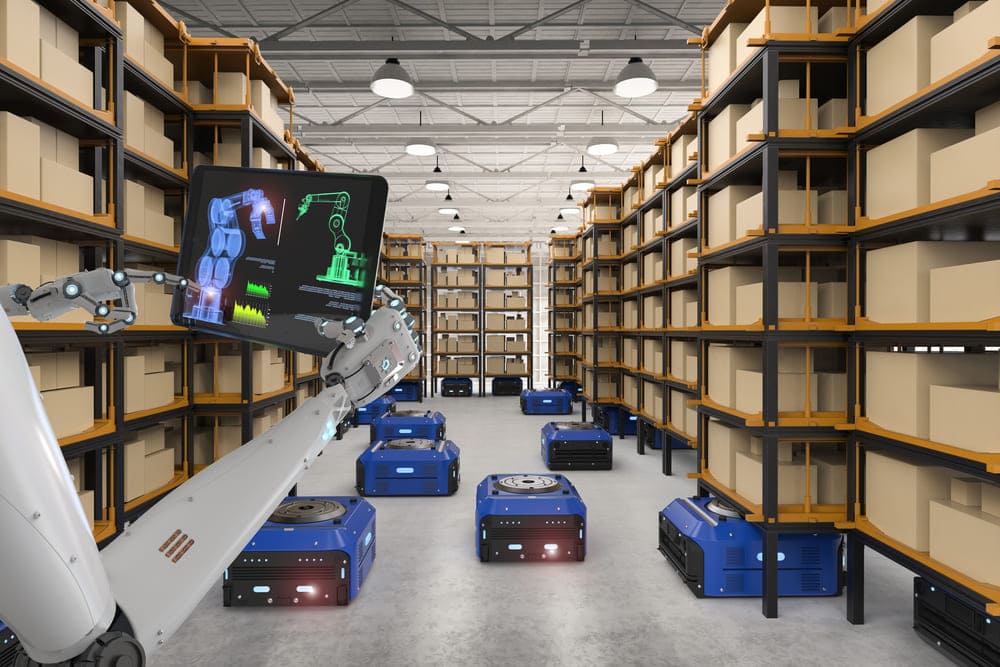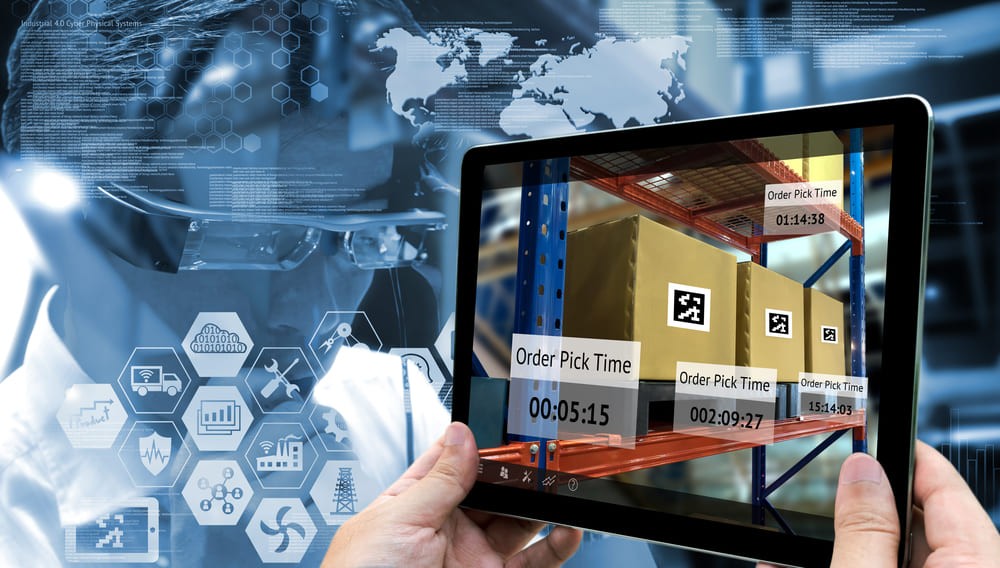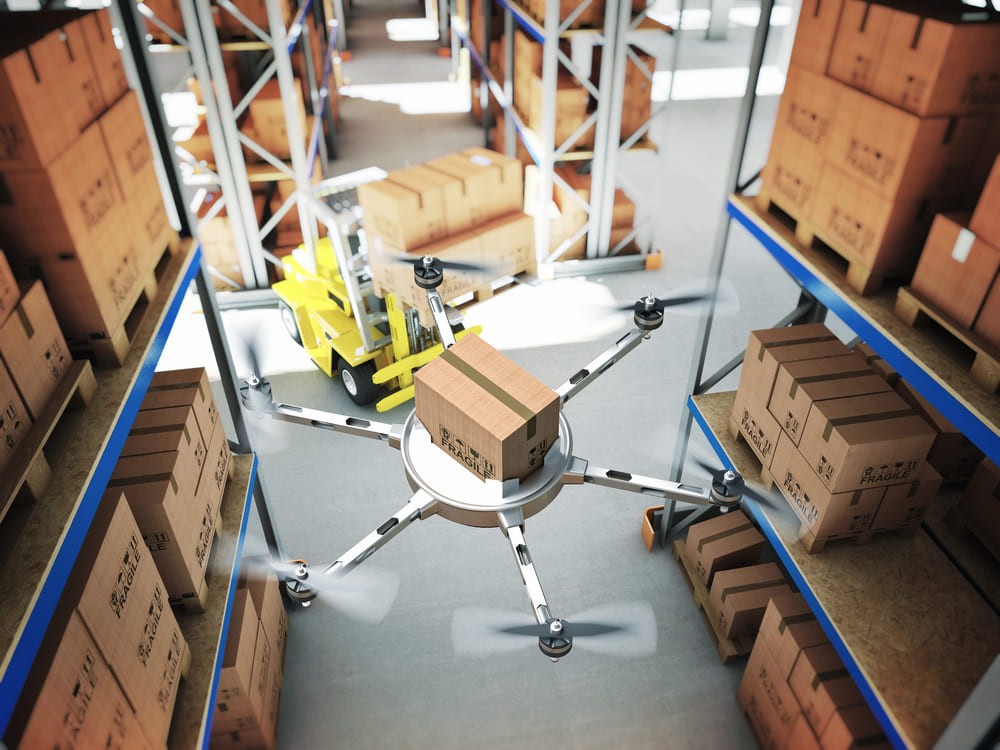The 4th Industrial era has brought to life many innovative technologies; as they become mainstream, clients’ expectations increase as well. To stand up to competition and to meet the growing demands for agility and accuracy, enterprises have to undergo a digital transformation.
As an integral part of the retail and manufacturing enterprise ecosystem, warehouses also need to scale up to meet market demands for increased operational efficiency and deliver fast time-to-value. The future lies in digitized warehousing, and those enterprises who have harnessed warehouse automation will have the upper hand.
Back in 2015, a survey conducted by Zenra had shown 70% of C-level executives were planning to automate their warehouse operations over the course of 5 years. Now, the percentage of companies that are already leveraging warehouse automation has increased to the point where any laggers will simply be driven out of business.
Digital warehousing goes hand in hand with warehouse automation: the process of leveraging technologies to perform tasks previously involving human labor.
In this article, we will focus on warehouse automation solutions, their benefits, and examine how you can tell if your warehouse is in dire need of digitization. For insights on how to incorporate automation into your warehouse, read on.
What is warehouse automation?
The simplest warehouse automation definition is replacing manual work with automated processes. Solutions for automating warehouse operations range from RPA (robotic process automation) driven software tools, sophisticated equipment like autonomous vehicles, picking tools and automated storage and retrieval systems.
Warehouse automation is now tackling repetitive and monotonous tasks and enables employees to focus on matters requiring human involvement. Yet, labor costs reduction and workforce reorientation are just some of the benefits of warehouse automation.

So how does automation impact warehouse efficiency?
Simply put, automation impacts efficiency in a big way. The disruptive effect of warehouse digitalization goes as far as
- Accelerating warehouse processes: the most vivid effect of warehouse digitalization is the increased speed of warehouse operations. Not only do automated systems account for enhanced accuracy, they also enable warehouse workers to carry out routine operations faster than ever before. With today’s business demand for fast time-to-value, this benefit is hard to ignore.
- Increasing transparency: always being aware of the exact stock quantities as well as the state of the available stock has a number of subsequent advantages. Eliminating stock misplacement, forecasting demand and planning supply, issuing purchase orders and automated procurement, deriving business insights, and generating sales reports are the positive disruptive effects automated and completely transparent smart warehousing can bring.
- Eliminating errors and fallacies: humans will be humans, after all. No matter how focused they are, there’s only so much they can pay attention to simultaneously. They are also too easily distracted and often make mistakes. Warehouse automation reduces human error to an absolute minimum, so you can rest assured no process remains unattended and no important detail escapes scrupulous attention. Ultimately, warehouse automation helps avoid accounting errors and tax issues, which is an important benefit.
- Real-time synchronization: on top of that, based on data obtained from IoT sensors, RPA algorithms can sync inventory databases with billing systems and financial data. Also, dispatching trucks and initiating deliveries can now be done almost instantly. Thus, digital warehousing increases the overall efficiency and transparency of the entire supply chain.
Read also: How to Optimize Supply Chain through IoT, Analytics and Automation
- Increased mobility: the cloud has greatly contributed to increasing workforce mobility by granting access to warehouse databases anytime from anywhere. Employees no longer have to be physically present to make weighted data-driven decisions and act on them.
- Improved warehouse space management/optimization: applied to facilitate automatic warehousing, IoT helps improve warehouse space management. By reporting exactly how much space is available, smart warehousing systems provide insights into better space utilization, optimal allocation and redistribution of assets, etc.
Obviously, all of the above accounts for an increase in transparency, enhanced operational efficiency, accuracy and fast-time-to-value, and gives enterprises a distinct competitive edge
Warehouse automation solutions
So how can you use warehouse automation opportunities to add value to your business? Today, many organizations are reaping the benefits of warehouse automation using IoT, AI, and cloud-based services. Below is an overview of some of the best smart warehousing practices.
1. Real-time data collection
With IoT sensors and devices tracking the state of products, machinery, equipment, and assets; collecting data and transmitting it for further processing and assessment can now be done in real-time. This has a number of positive effects; above all, on transparency, synchronization of processes and informed decision making.
2. Connectivity
Within the IoT driven warehouse, all things are interconnected. The objects, devices, and elements can communicate and make necessary adjustments without human involvement.
For example, a sensor may inform the storage camera that the product temperature exceeds critical levels, and the storage camera will automatically change storage temperature. Monitoring the state of equipment will help make timely repairs and avoid extra expenditures.
3. Machine Learning and advanced data analytics
With so much data coming in from within the warehouse, it’s only logical that enterprises will do their best to use it to their benefit. While real time monitoring is its most obvious application, enterprises increasingly use incoming data for predictive analysis.
Forecasting demand and planning procurements, scheduling repairs and tech upgrades is now performed on the basis of insights derived from historical data. Inventory optimization as well as increased operational efficiency are just some of the positive outcomes of using ML and predictive analytics in a warehouse.

4. Machine to human interactions
Wearable devices facilitate machine-to-human interactions and let warehouse staff keep their hands on the pulse even if they are currently off site. Packing or manufacturing instructions can be transmitted directly through smart glasses, while headsets facilitate remote direct voice communication with other workers. Voice command tools can also manage warehouse machinery increasing operational effectiveness by up to 30%.
By using AR technology, smart glasses can communicate with smart product tags enabling employees to quickly view inventory-related data: type, delivery and dispatch info, manufacturing dates, etc. Apart from facilitating on-site operations, wearables can also monitor employee health status by tracking pulse and body temperature.
5. Warehouse mobility
As a matter of fact, warehouse digitalization enables workers to spend more time on site than ever. With warehouse mobility solutions they are no longer tied to their desktop workstations and can access data and solve issues on the go. Data visualization, video conferences, digital assistance, and cloud integration reduce walking time and accelerate overall operational performance.
6. Robotic solutions for warehouse automation
Since robots initially were meant to rid humans of manual labor, it’s only natural they would belong in a warehouse. With monotonous tasks like lifting, transporting and repositioning items trusted to robots, warehouse operations become faster and more efficient.
Modern robots are getting smarter every day. They self-learn and no longer require human programming. They are being developed with human-like capabilities, such as sensory recognition, skill, and intellect.
7. Drones and autonomous guided vehicles
Autonomous guided vehicles (AGVs) are set to disrupt warehouse operations as we know them, covering large distances in short time spans. Tycoons like Amazon are already using AVG’s to accelerate warehouse processes; in fact, the use of fast autonomous vehicles accounts for the same day delivery option available to Amazon clients.
In terms of warehouse automation, using drones also plays a major part. Inside the digitized warehouse, drones have wide application. Equipped with cameras, sensors and barcode scanners, quick and nimble drones can easily perform inventory counts and get to places that humans normally find hard to reach.

8. Real-time inventory management
Higher client expectations towards ecommerce services as well as the demand for same-day delivery call for real-time inventory management. According to MHI’s Annual Industry Report, as many as 75% of respondents will be implementing real-time inventory management solutions in the upcoming years.
Again, smart sensors, RFID (radio-frequency identification) systems, and GPS navigation will serve as a means to ensure end-to-end visibility and collect data which warehouse managers can instantly act on.
9. Automated storage and retrieval systems (AS/RS)
These warehouse-specific systems pick products from warehouse shelves and place them back in without human intervention. Typically, these systems go hand in hand with warehouse management software solutions, tackling order processing and warehouse workflows.
10. Warehouse management systems
Generally speaking, adopting warehouse management systems to streamline warehouse operations are some of the best practices of warehouse automation. WMS’s aggregate all the warehouse-related data into one platform and leverage data visualization techniques to deliver it to members of the team and third parties if necessary.
Available in a comprehensive format, this data enables warehouse management to act quickly even in unforeseen circumstances and make accurate data-driven decisions.
11. Automated picking tools
Automated picking tools are now making formerly tiresome picking procedures easy as pie. As of today, robotic and voice automated order picking, as well as pick-to-light and barcode recognition technologies ensure accuracy of this meticulous process. Integrated with a warehouse management system, these tools help deliver fast time-to value by automating one of the most important aspects of warehouse operations.
If you’ve been wondering why automation is needed in a warehouse and how warehouse automation actually works, these vivid examples should give you a clear picture and demystify the concept of smart warehousing.
But how can you tell your warehouse is in need of automation? Read on for the list of symptoms and see if any of them apply to you.

Signs that your warehouse needs automation
Most of the common issues and shortcomings in warehouse management usually have direct manifestations. By reading them correctly, you should be able to tell if your warehouse would benefit from using automated solutions.
- Lack of clarity as to stock numbers: you are frequently undertaking stock counts and are still uncertain about the exact numbers of stock available. Your stock is often lost, misplaced or broken, and you are frequently either out of stock or overstocked. All in all, it’s a sign your warehouse could do better with more transparency. Lack of accuracy when it comes to stock counts and availability of assets and inventory is an indication that your warehouse ecosystem is opaque and would benefit from automated inventory management.
- Slow loading and dispatch processes: if picking items from the warehouse to assemble orders takes forever and the dispatch process is often too slow, it’s a sign pickers find it difficult to locate the inventory. This is also a major indication that implementing a management solution should help.
- Lack of warehouse space: somehow you find it difficult to locate free shelves to place inventory. You are contemplating moving to larger facilities, but aren’t certain that would help. This is a sign you could use warehouse space management systems to help use your existing facilities more efficiently.
- Too much paperwork: your employees are struggling with paper-based documentation and Google Docs are being used to optimize at least some of the document flow, but it doesn’t really help. This is an indication your inventory transactions should be integrated into an ERP system.
- Too many shipment errors and returns: the level of inaccuracies and fallacies is frustrating. Because of so many mistakes, you have to frequently handle returns, you are losing money and customers aren’t happy. This is a direct result of the overall opaqueness of your warehouse management system and a call for digitalization that should ensure accuracy by improving visibility.
- You have too many employees and you’re still hiring: you are spending too much on salaries, but it seems like your existing staff can’t handle your warehouse processes. Digital warehousing should help you automate routine rule based tasks, optimize employee numbers and use your human workforce more effectively.
- Workplace safety issues and employee injuries: this is a critical symptom, and is a good indication that things have gone out of hand. Your warehouse is messy, there’s lack of end-to-end visibility, and the risks are hard to predict. This situation could lead to court suits and has the potential to derail your business reputation. In this case, investing into a smart warehousing system should prove you are a responsible employer.
Streamlining warehouse operations with Eastern Peak
Approaching warehouse digitalization is a complex task. Your first steps should include pinpointing the main areas that call for automation, and identifying challenges and bottlenecks in your warehouse processes.
If you are considering partnering with a reliable warehouse automation solutions provider to guide you through all the important stages of this complex process, you’re on the right track. Request for an in-depth consultation with Eastern Peak professionals now and start working on your warehouse transformation plan.
Read also:



